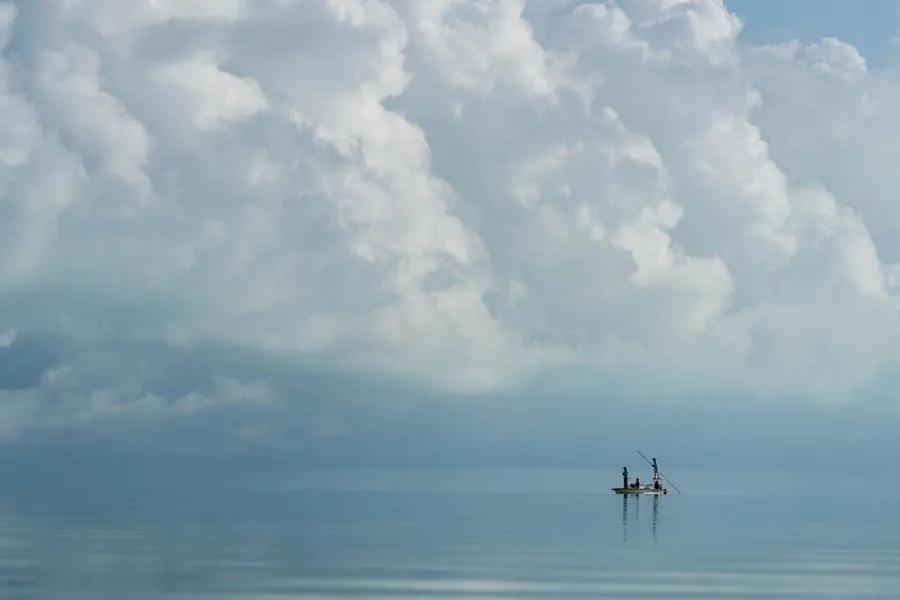
Why Cuba?
Why take a fly fishing trip to Cuba? Quite simply the vast variety of fishing grounds and incredible lack of fishing pressure make this region unique in all of the Caribbean. It is truly astounding to enjoy fishing for days on end without seeing another fishing skiff outside of those in our own fishing party. The Cuban government has placed strict limits on both commercial and sport fishing in its many national marine parks. As a result of the strict regulations, anglers on our trips to Cuba enjoy exclusive fishing access to vast flats ecosystems.
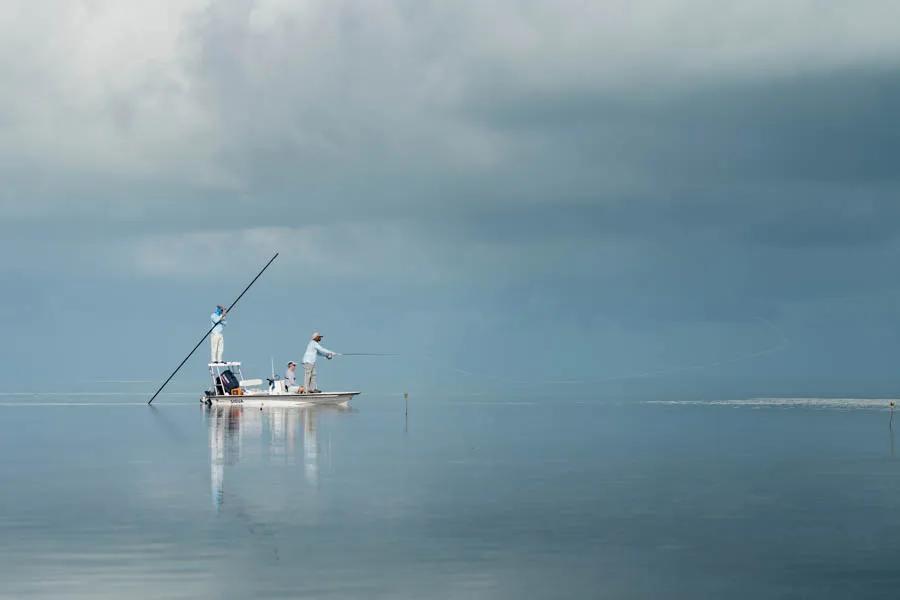
The Cayo Largo Archipelago
Cuba is the largest island country in the Caribbean and offers several different fisheries that each have their unique personalities. On our most recent hosted trip we visited the Cayo Largo Archipelago which is a chain of islands equivalent to about half of the size of the Florida Keys. The islands we are targeting are located south of the mainland. The Avalon program has exclusive access to this region which means that there are no other fishing boats encountered during the entire week-long program. The Cayo Largo fishery is known for its exceptional mixed species opportunities including bonefish, tarpon, permit, snook, barracuda, jacks and snapper.
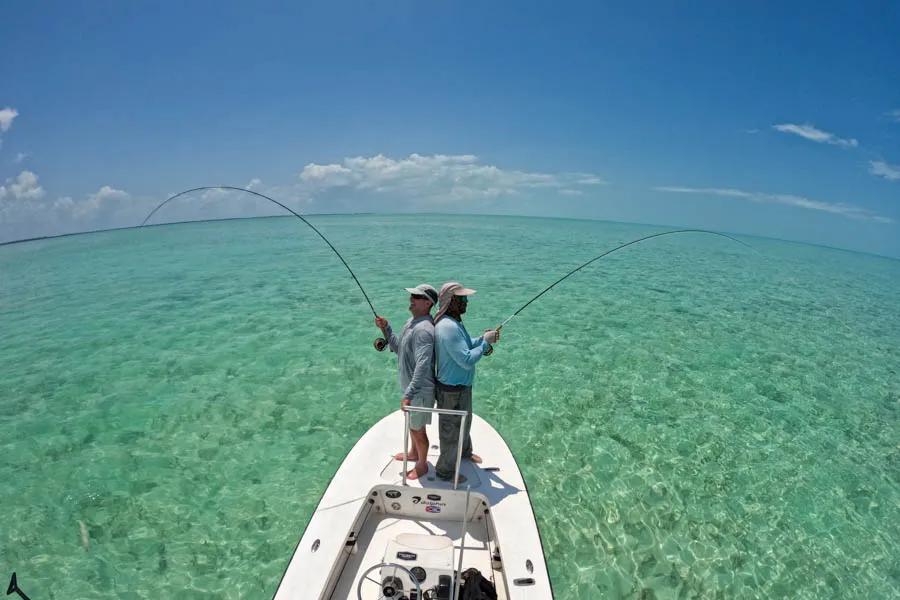
The Avalon fleet
The majority of operations in Cuba are exclusively accessed through the Avalon fleet of live aboard yachts. On our trip to Cayo Largo we traveled via chartered bus about 3 hours south of Havana to meet the boat in the small harbor. Once on board we travel several hours by boat to reach the islands while enjoying dinner and cocktails on the way. The 3 story live aboard has plenty of space including comfortable guest rooms, an air conditioned living room gathering area, an air conditioned dining room and bar and an upper sun deck. There is also a large staging area near the back of the boat for rigging and storing fly rods. The food is always excellent on all of the Avalon boats. Logistics in Cuba are not for the faint of heart and sourcing quality foods is not trivial but somehow the Avalon program always has fresh produce, meats and seafood. The meals are served family style and there are always several choices at each meal. For seafood lovers there is nearly always fresh lobster and snapper at every dinner service! Wine and beer is included in the program as well as a variety of rum drinks such as mojitos.
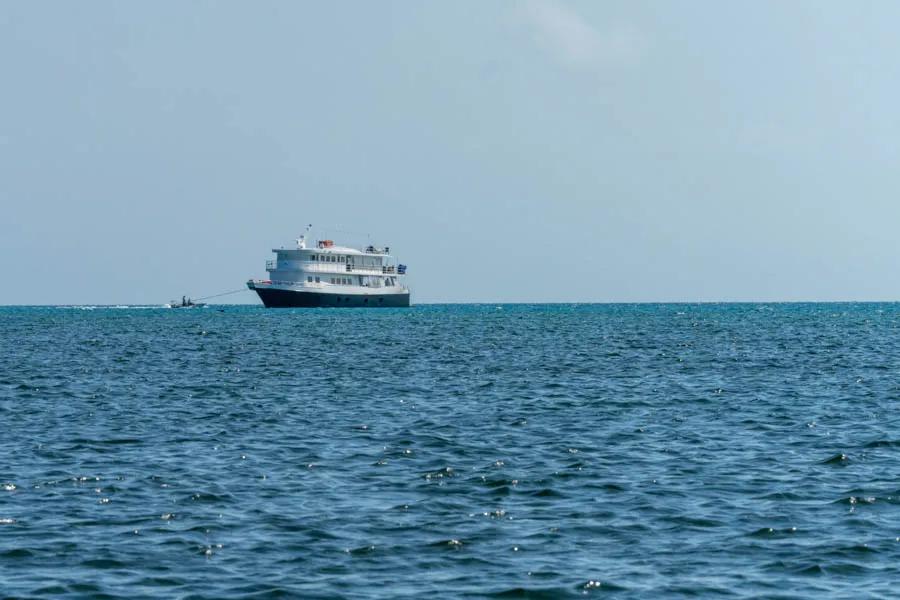
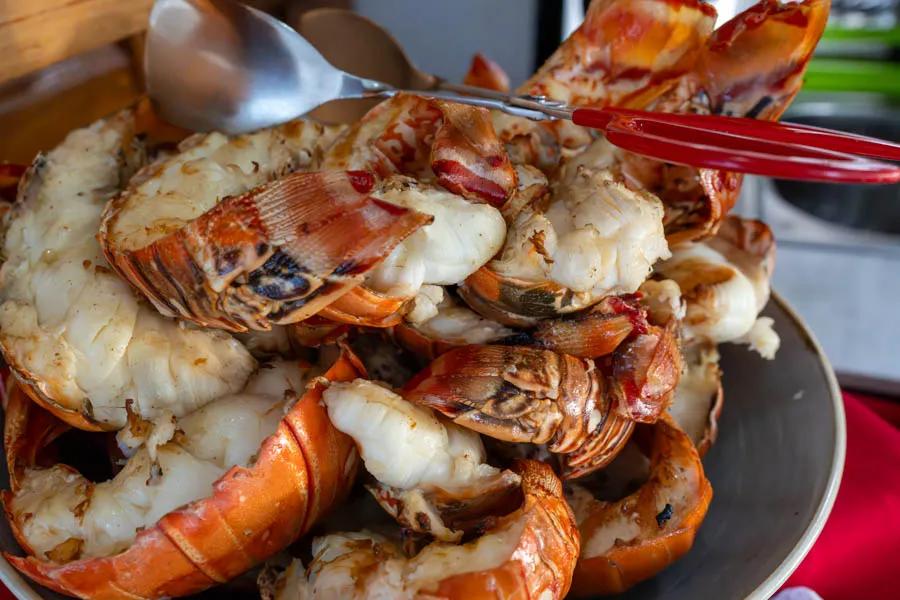
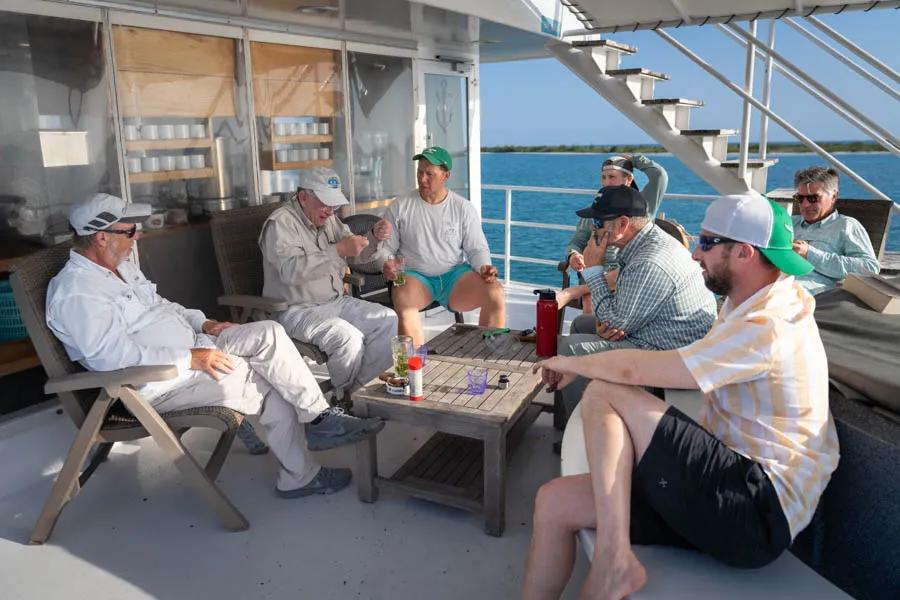
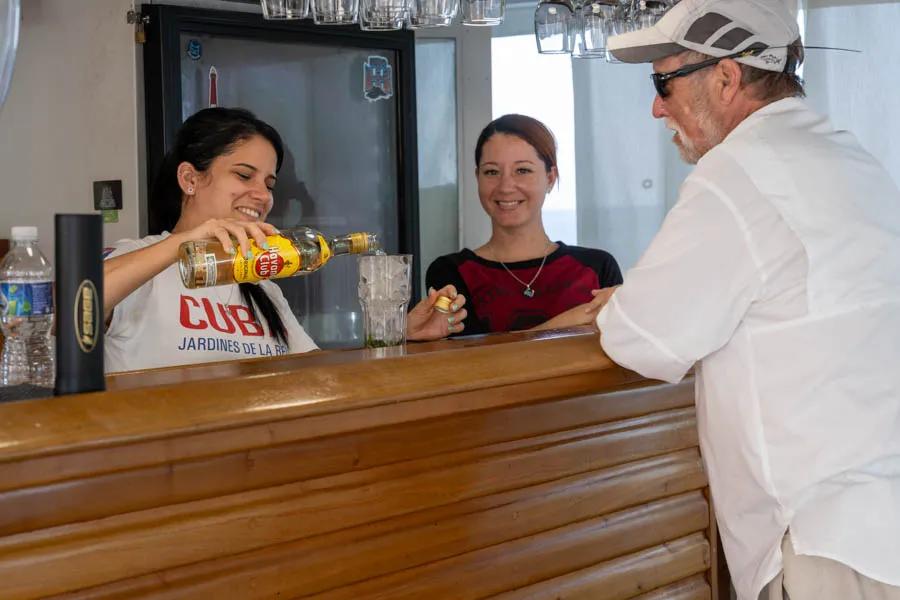
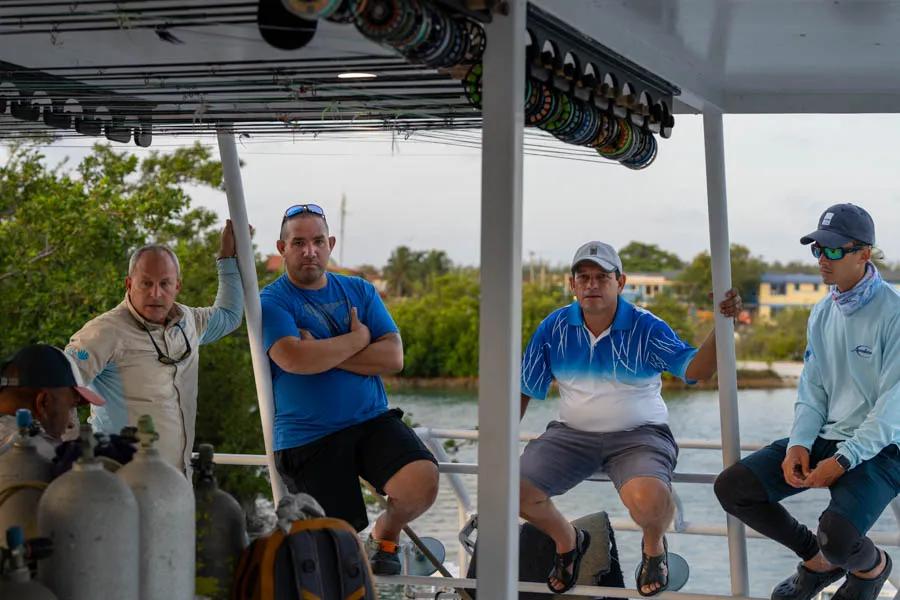
The Fishing Program
The Cayo Largo region is known for its exceptional mixed species opportunities. This is one of the best locations in Cuba for a shot at a grand slam. The region reminds me a lot of South Andros in the Bahamas except for the larger variety of fish species. There are expansive sand flats with lots of good wading opportunities. The vast flats offer incredible bonefish opportunities with some huge bones as well as great numbers. Permit fishing opportunities are also excellent along with both resident and migratory tarpon.
Avalon has a home base at a small village on the largest island in the chain which is the only location that is populated. The guides stage out of Cayo Largo between trips and that is where the dolphin brand skiffs are based. The village also has a small clinic, air strip and cell service which is reassuring if something unexpected comes up. Although most of the fishing is in more remote areas with no service, the boat has marine radios and you can also get back to the village within an hour and a half or less run in the skiffs from all of the fishing grounds. Avalon breaks the fishery into six zones. Each day 2 skiffs visit one zone. The zones are each expansive with lots of water to fish. Most of the day there is not another boat in sight and if you see another angler was the other skiff from our party in the same zone.
As the week progresses the mother ship moves progressively moves through the island chain. At each moorage the mother ship spends one or two nights before relocating to explore fresh waters. Each zone in the system has its own character and unique fishing qualities. At the midpoint of the week the boat begins working its way back east and then after the final fishing day motors back to the mainland where you spend the final night on the boat before heading back to Havana the following morning.
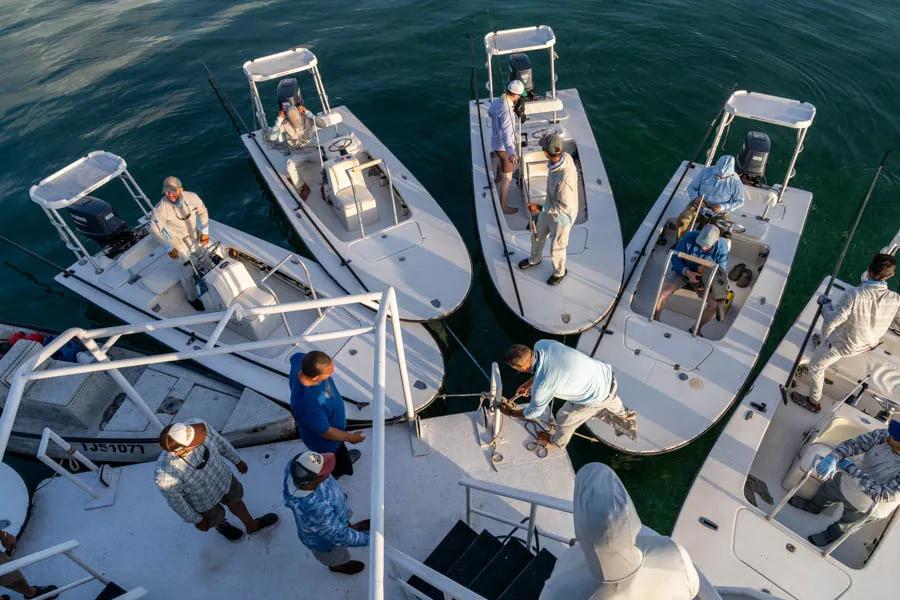
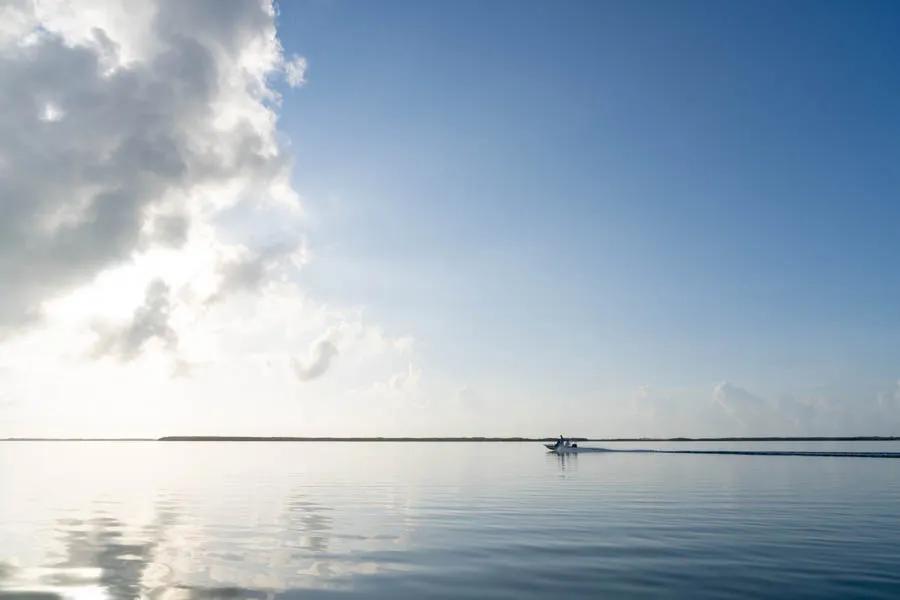
Bonefishing
The bonefishing in Cayo Largo is nothing short of spectacular. This region offers some of the very best fly fishing for bonefish in all of Carribean and I would rate it right up there with the quality of fishing locations like South Andros in the Bahamas. The bonefish are BIG with average fish around 3-4 pounds. There are plenty of really big fish in the 6-8 lb range and some occasionally pushing the 10lb mark. The fish receive nearly non-existent pressure and as long as you don’t spook them with a sloppy cast, you have a high probability of getting a hookup. I think everyone on the trip landed a big fish in the 7-8lb range over the course of the week. The average bonefish was bigger than any fish I have caught in Belize or Mexico. There are also good numbers of fish with lots of opportunities all day long on most days. Generally we weren’t fishing to huge schools of fish, but rather small groups. Like in other regions, the largest fish were often cruising as singles or pairs.
I much prefer fishing to singles or small groups of fish vs. casting into a huge school and this was some exceptionally high quality bonefishing. The same flies that work well in Andros in the Bahamas were productive in Cayo Largo including gotchas, pink crazy charlies, spawning shrimp and mantis shrimp. Larger flies in the size 6 and 4 range worked great in the slightly deeper flats and we downsized a bit in really skinny water. Lead eyes helped at high tide and chain eyes or no eyes were the ticket on skinny flats with less water.
I would have to say that Cayo Largo offers some of the best bonefishing in all of the Caribbean. The abundance and size of the fish combined with the quality of the angling experience and the opportunity to both fish from skiffs or wade make it a truly special location.
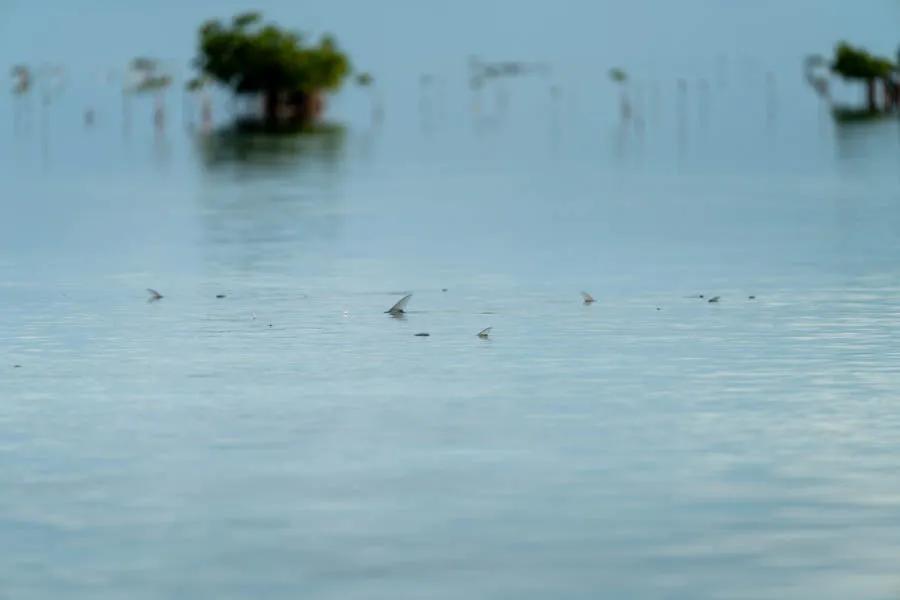
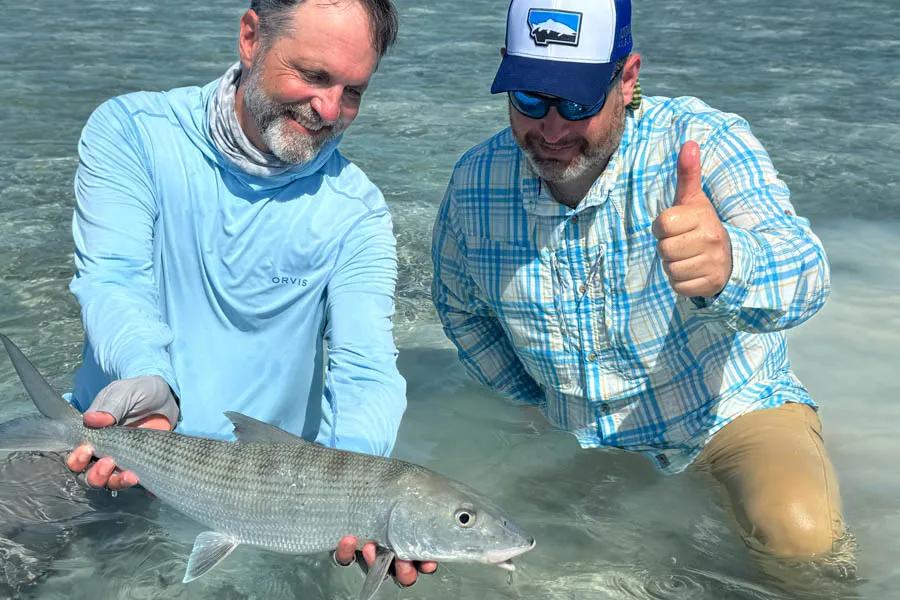
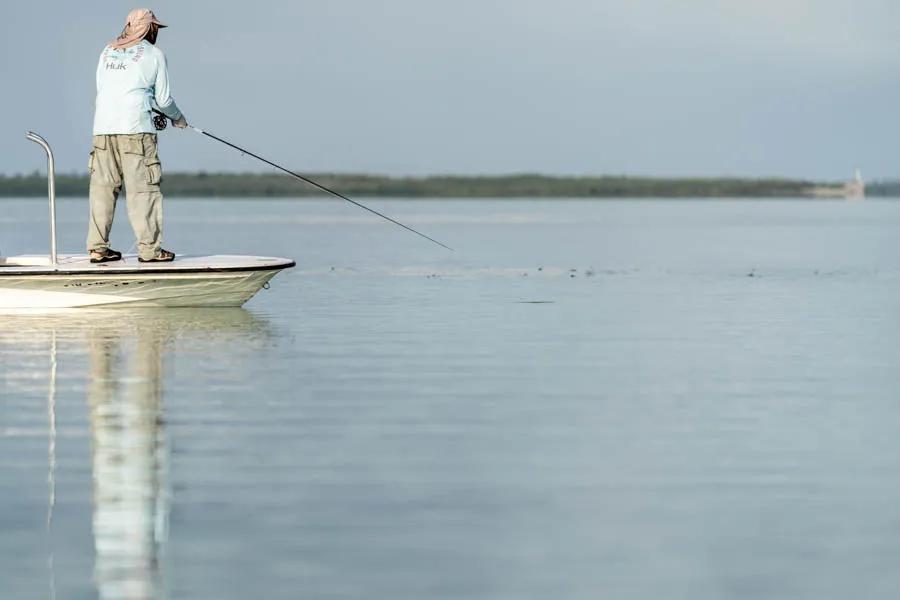
Permit
Permit fishing is also quite good in the Cayo Largo fishery. Although permit numbers are not as high as in some other regions of Cuba such as zone C of the Jardines, the permit in cayo largo are quick to take a fly. What is so unique about Cayo Largo is that big permit are found cruising the expansive sand flats and are often found trailing behind cruising rays or sharks. On these expansive sand flats the guides often search for the rays and then poll to intercept them. The best permit flies on these flats are larger shrimp patterns. Generally when the permit are trailing rays the angler casts near the back of the ray which allows the permit to intercept the fly as they are searching for shrimp kicked up by the mudding rays. There are also some more traditional pancake style flats on the reef side as well where it is more common to find tailing permit. On these flats traditional crab patterns are more effective than the shrimp patterns on the flats to the north. We had 3 days of strong winds in the middle of the week when we were in some of the best permit waters but our group still found lots of permit and enjoyed a few solid permit eats along the way.
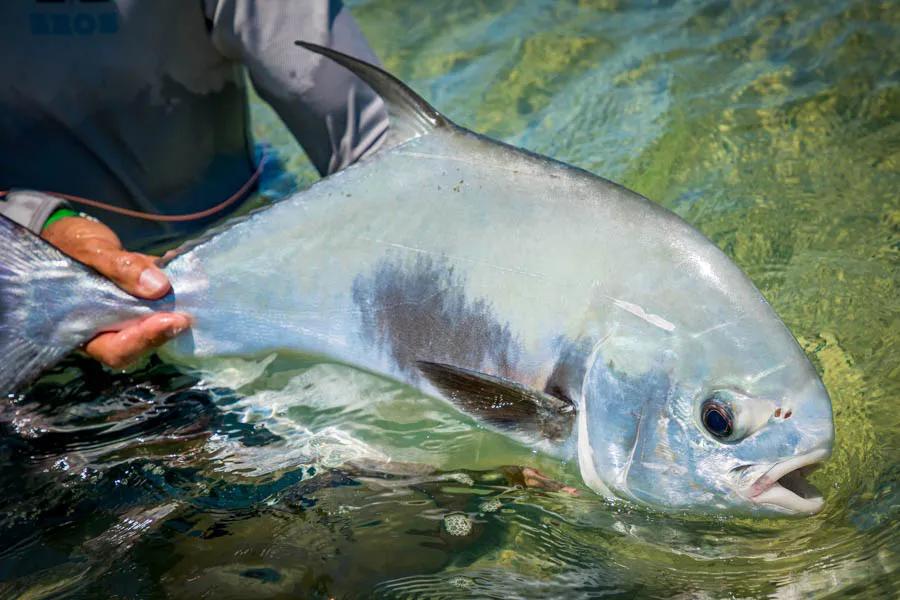
Tarpon
Cayo Largo also offers excellent opportunities for tarpon. In mid March through June large migratory tarpon make their way into the 2 western zones (zones 5 and 6). This same peak season also brings the larger resident tarpon onto the flats during high tide on the south sides of the islands in other zones. There are also plenty of juvenile tarpon located in some of the inter-island lagoons and cuts in the mangroves. While other regions such as the Isla de Juventude or zone A of the Jardines de la Reina have larger runs of migratory fish, they also lack the diversity of other species. Cayo Largo offers a great blend of solid tarpon opportunities along with great opportunities for many other species.
During our most recent hosted week most of the guests on our trip had opportunities to hook or land tarpon. I enjoyed a few great tarpon shots myself. One morning during high tide we found a group of tarpon circling bait and after a few casts I had a strong grab without a hookup. A few casts later a nice 60lb tarpon finally hooked up and tail-walked across the water before finally throwing the hook. On some other days we encountered some huge adult tarpon cruising the flats just off the reef. The largest fish, about 80-100lbs cruised by at 20 yards in perfect range…the only problem was we were permit fishing at the time and couldn’t get to the tarpon rod fast enough.
We also enjoy some nice opportunities to cast to juvenile tarpon in the mangroves. These fish were in the 5-15lb range and were fairly abundant in many areas of the islands in the lagoons and cuts.
Generally for the tarpon we used floating lines, although there were a few deep channels that we did some blind fishing in. In these scenarios a sinking or intermediate line came in handy.
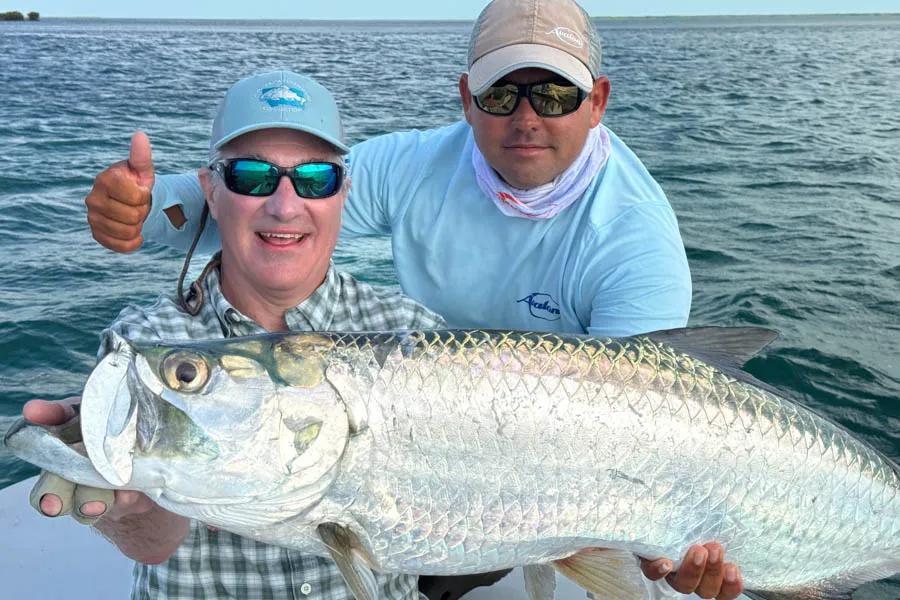
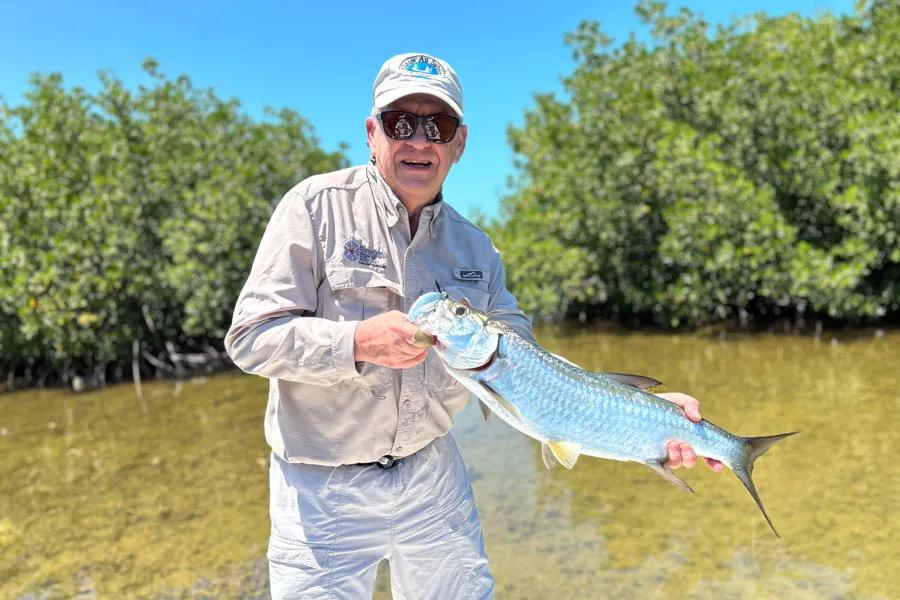
Barracuda
Several of our guests hooked and landed ‘cuda on our trip. I’m a big fan of barracuda fishing and always like to have a rod rigged for these toothy critters handy. A needle fish pattern on wire leader on a 10 weight is the perfect match. The explosive takes when a barracuda strikes is well worth the price of admission!
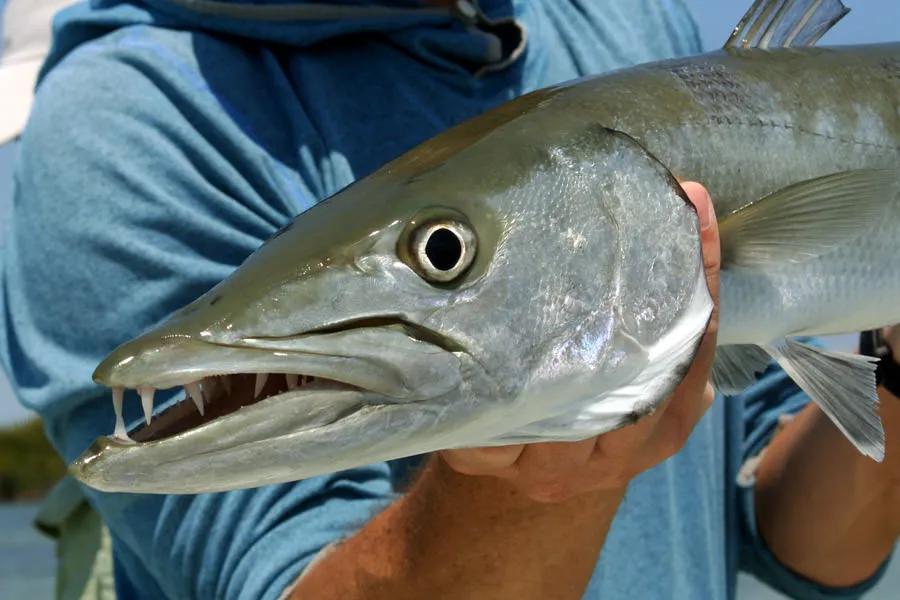
Jacks
Jacks are always a fun species to tangle with on the flats. These fish behave like hard hitting gangsters with explosive takes and line peeling runs. We had several shots at jacks either on the flats or as they cruised through deeper cuts as the tides changed. Generally any baitfish pattern will do the trick when these fish are on the prowl.
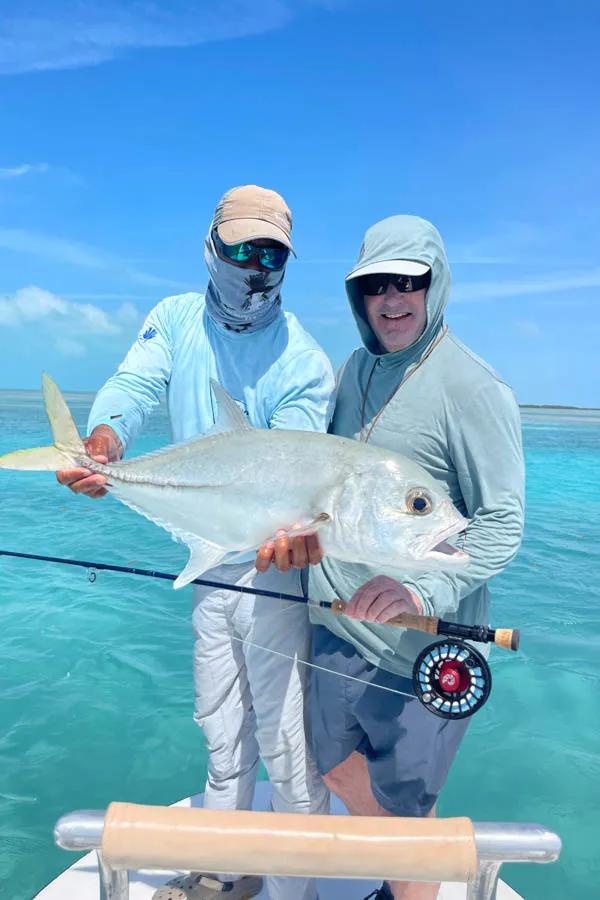
Snook and Snapper
There are also snook and snapper lurking in the mangroves. I hooked a few snook while looking for bonefish at one location. The snapper were quite large and many of our guests enjoyed a quick distraction when in the mangroves to target these tasty fish. Nearly every day one of our group brought back a snapper or two for the chef to cook up or make some ceviche with. Tasty!
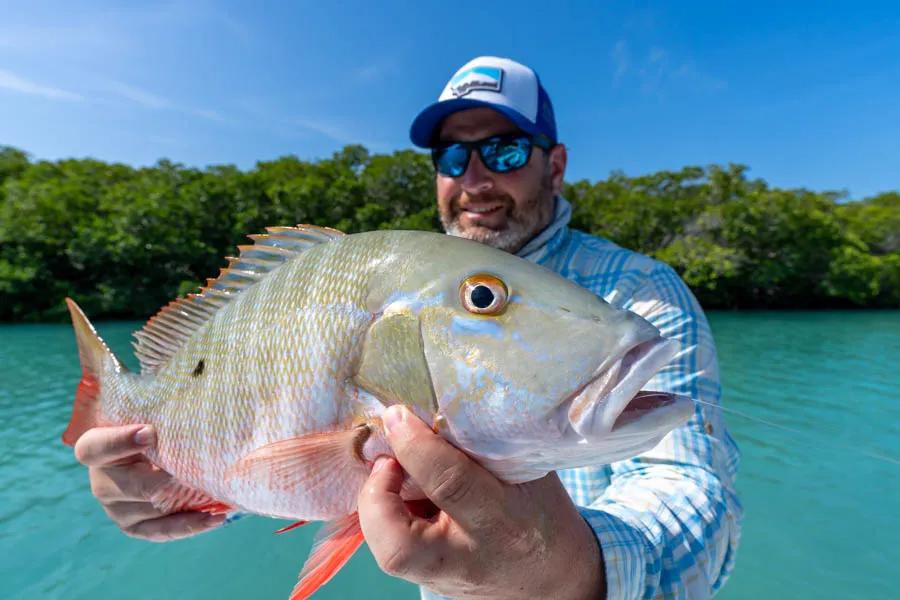
Rods and Equipment
There are no fly shops in Cuba so we all came loaded for bear. The huge variety of fishing species and scenarios requires a diverse arsenal of rods and flies. Here is what I recommended for our group for each skiff:
- 8 weight with floating line (2 of these so both anglers can chase bonefish at the same time if wade fishing)
- 9 weight with floating line - this is a great permit rod or can also be the preferred bonefish rod when the wind is strong
- 10 weight with floating line - this is a great barracuda rod and can also be used for permit, especially if the wind is blowing. It also serves a nice tarpon rod
- 11 weight (or maybe a second 10 weight). This is a nice tarpon rod and it is good to have both a floating line as well as a spool with sinking or intermediate line
Flies
- An assortment of bahamas style shrimp flies (gotchas, mantis shrimp, spawning shrimp, etc). Size 4-8 with both chain eyes and some lead eyes. These are great for bonefish
- A few bigger size 2 shrimp for permit such as mantis shrimp, the Avalon fly and squimps
- A few crab flies for permit for the reef side flats including strong arm and flexo crabs.
- A variety of tarpon flies - your normal go to patterns like tarpon toads, tarpon tapas, black death, cockroaches etc.
- Some general saltwater baitfish patterns in size 2 up to 3/0 including mushies, deceivers and clousers
- A few needlefish flies for barracuda
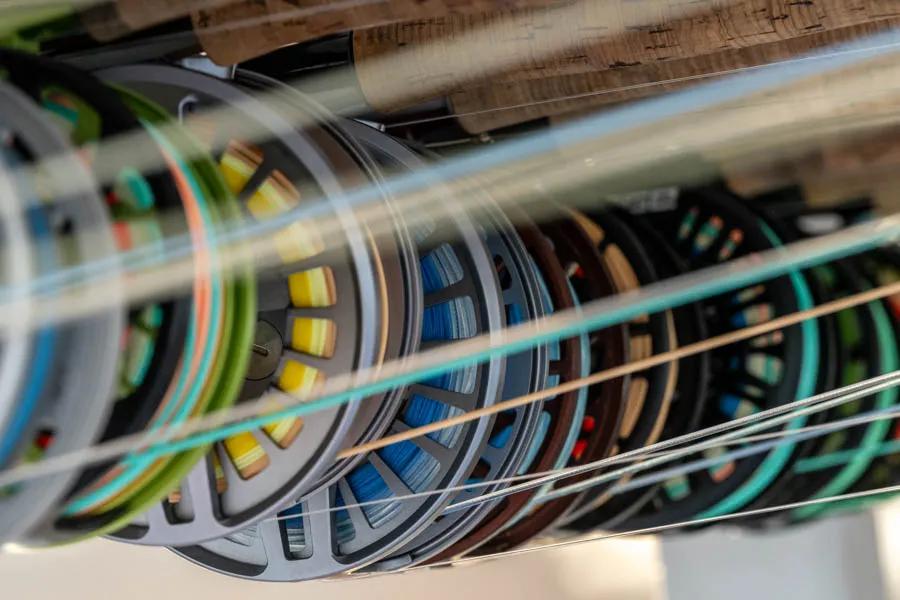
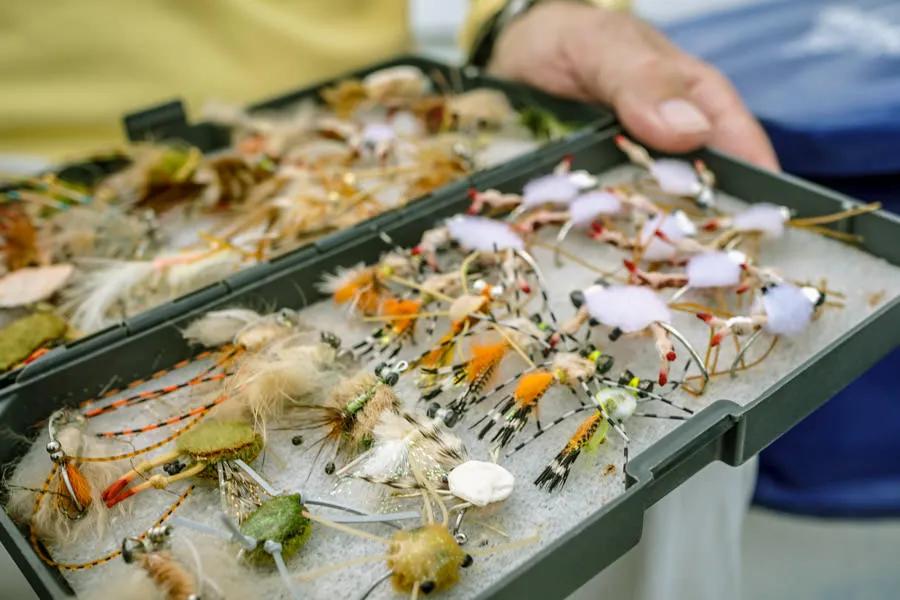
Travel, logistics and a side trip to Havana
Travel to Cuba has become much easier in recent years for American travelers. There are now numerous qualifying exemptions for legal travel. There are multiple flights per day on several US based carriers into Havana. Guests can either arrive the morning of the departure or a few days earlier to explore Havana. On our recent trip we arrived two days early and split a large Air B and B rental in Old Havana.
Havana is a truly unique destination. The historic architecture from the Spanish colonial period is beautiful, even in its slowly decaying form. The locals are friendly and warm and there is vibrant music and lots of great food. The Cuban economy continues to struggle and was exacerbated during the Covid pandemic. Traveling to Cuba often feels like traveling back in time. There are still many old American cars that were prevalent before the revolution that continue to be restored and repaired. Grocery stores are non existent but street vendors are common. Havana is a popular tourist destination with folks from many South American countries, Canada and Europe visiting. While the infrastructure in Havana is clearly degrading, once outside of the city it is often very poor with rolling power outages common. US credit cards do not work in Cuba and travelers need to bring US dollars in varied denominations when exploring Havana.
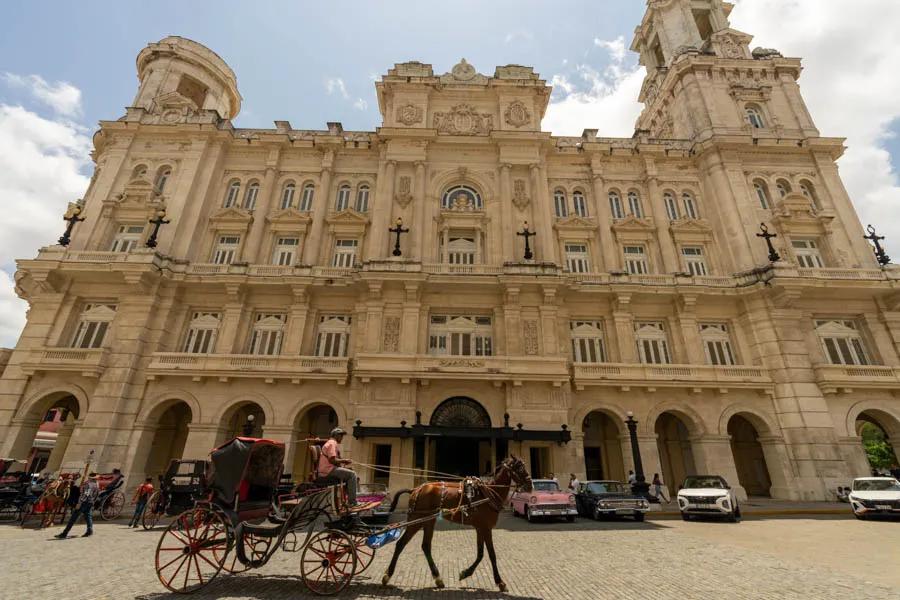
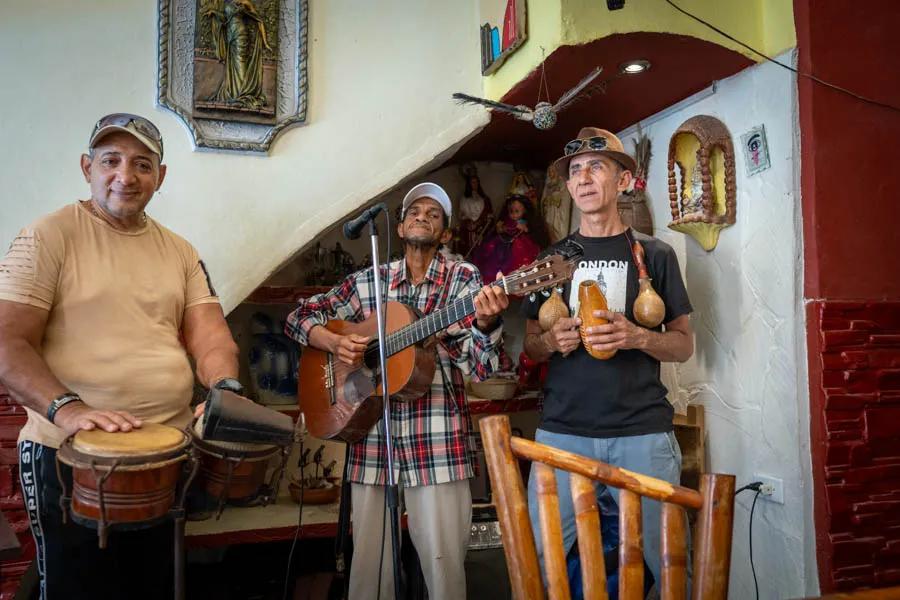
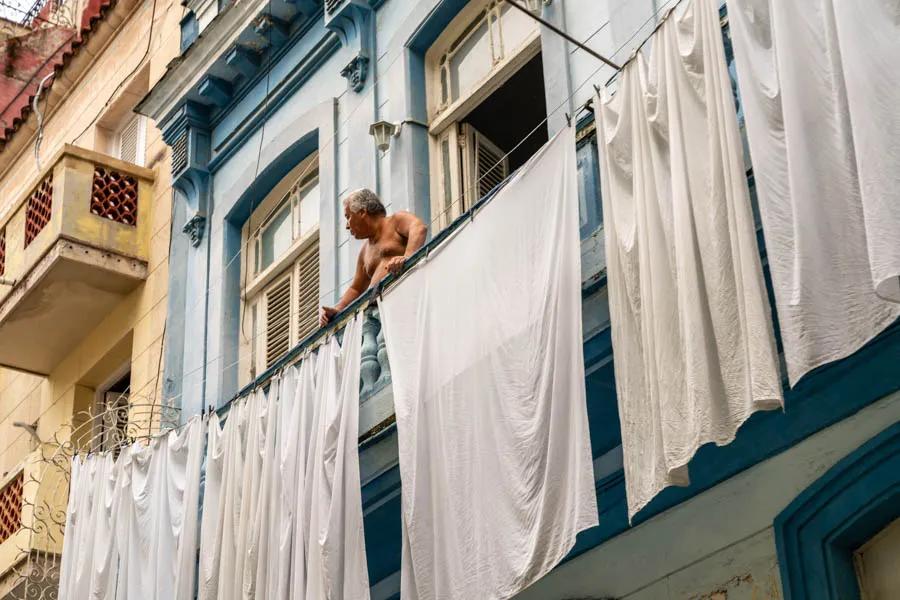
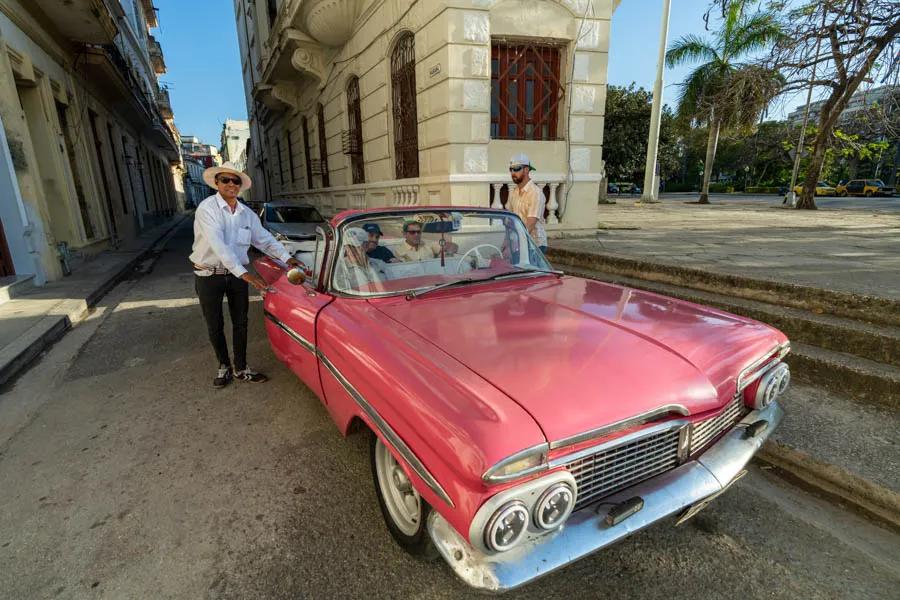
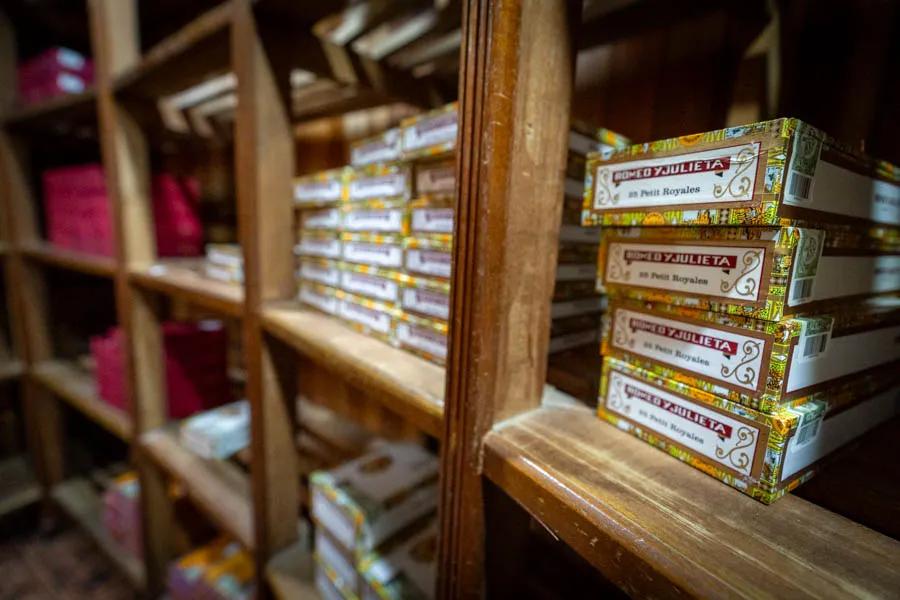
Summary
There are many unique fisheries to explore in Cuba, but Cayo Largo is certainly at the top of the list for anglers looking for variety. Without exception it offers some of the best bonefishing that I have personally experienced anywhere in the Caribbean. Combining superb bonefishing with a very solid tarpon and permit fishery makes Cayo Largo a very special location. The fishing grounds are also extremely vast allowing the opportunity to explore new water each day. The expanse of the fishing grounds also provides opportunities to make adjustments based on winds and tides allowing anglers to explore reef side flats for big tarpon and permit, inter island lagoons and cuts when the wind is blowing as well as the vast north side sand flats filled with bonefish and permit. What makes fly fishing in Cuba so uniquely special is the vast amount of water that you can access on a single trip with an incredible lack of pressure. We can’t wait to return in April of 2025 for our return hosted trip!
Click Here to Learn More about our Hosted Trip to Cuba in April of 2025
